- Home
- James McBride
Kill 'Em and Leave Page 2
Kill 'Em and Leave Read online
Page 2
A few moments later, James Brown himself appeared at the door, with two white women, one on each arm, both dressed in sixties wear, complete with beehive hairdos.
Dotty and Shelly nearly fainted. The Godfather of Soul seemed tickled. He greeted them warmly. He asked Dotty, “What’s your name?”
“Dotty…”
“Stay in school, Dotty. Don’t be no fool!” He shook her hand and shook Shelly’s hand and the two girls fled.
We listened, breathless, as Dotty recounted it. It seemed unbelievable. Even my mother was impressed. “See that?” she barked. “Listen to James Brown. Stay in school!” But who cared about what she said. What was important was that James Brown said it! Dotty’s star soared. She’d always been a total James Brown fanatic, but in a house of twelve kids where food was scarce and attention scarcer, where ownership of the latest James Brown 45 rpm was like owning the Holy Grail, Dotty morphed from underling to holding a kind of special status—ambassador to famedom, chosen member of the tribe, a button man, a made member of the mob. In other words, a Big Kid with Gold Star standing.
The shine lasted months. She would stand in our freezing living room on cold winter nights when there was nothing to eat and nowhere to go and no money to go there anyway, and play out the scenario. “He’s so small,” she’d declare. “He’s a little guy.” She’d leap up, whip her hair back in James Brown style, thrust out her jaw, and holler in a southern accent, “Stay in school, Dot-tay! Don’t be no fool! Hah!” We howled. Visitors, neighbors, even my gruff stepfather and the serious people from church asked her to relive the moment, which she did, giving a blow-by-blow account of how the Hardest Working Man in Show Business—Mr. Dynamite himself—had come to the door of his house and given it to her straight: “Stay in school, Dot-tay!” The grumpy old church folks listened and nodded stern approval. James Brown was right. Stay in school, Dotty, stay in school.
I watched all this in grim silence. My crummy sister had beat me to the punch. She had kissed the black stone. She’d met James Brown. My jealousy lasted years.
Every man or woman in this life has a song, and if you’re lucky you can remember it. The song of your wedding, the song of your first love, the song of your childhood. For African Americans, the song of our life, the song of our entire history, is embodied in the life and times of James Brown.
He is easily one of the most famous African Americans in the world, and arguably the most influential African American in pop music history. His picture hangs on the walls of African homes and huts where people don’t even know what he did for a living. His imprint has been felt throughout Western Europe, Asia, the Far East. His dances, his language, his music, his style, his pioneering funk, his manner of speaking are stamped into the American consciousness as deeply as that of any civil rights leader or sports hero, including Muhammad Ali, Michael Jordan, Martin Luther King, and Malcolm X. He is also arguably the most misunderstood and misrepresented African American figure of the last three hundred years, and I would speculate that he is nearly as important and as influential in American social history as, say, Harriet Tubman or Frederick Douglass. When his 2006 funeral procession steered slowly through Harlem, men rushed out of barbershops with shaving cream on their faces, children stayed home from school, old people wept openly. The Apollo Theater crowds lined the streets for five city blocks, thousands of people, from 125th up to 130th Street. Black America from front to back took a knee and bowed. The King of Pop himself, Michael Jackson, flew to Augusta for the funeral service, a coronation from a king to a king. Black Americans loved Michael, too, but while he was black America’s child—abandoned at times, forsaken, adopted again, in, out, black, white, not sure—there was no question about who James Brown was. James Brown was our soul. He was unquestionably black. Unquestionably proud. Unquestionably a man. He was real and he was funny. He was the uncle from down South who shows up at your house, gets drunk, takes out his teeth, embarrasses you in front of your friends, and grunts, “Stay in school!” But you love him. And you know he loves you.
But there is more, and here is where the story grows extra body parts. During the course of his forty-five-year career, James Brown sold more than 200 million records, recorded 321 albums, 16 of them hits, wrote 832 songs, and made 45 gold records. He revolutionized American music: he was the very first to fuse jazz into popular funk; the very first to record a “live” album that became a number-one record. His influence created several categories of music now tabulated by Billboard, Variety, Downbeat, and Rolling Stone; he sang with everyone from hip-hop creator Afrika Bambaataa to Pavarotti to pioneer jazz arranger Oliver Nelson. His band was revolutionary—it was made up of outstanding players and vocalists, among the best in popular music this nation has ever produced. His opening performance that preceded the Rolling Stones’ appearance at the T.A.M.I. concert from Santa Monica in 1964 was so hot that Keith Richards later confessed that following James Brown was the worst decision of the Rolling Stones’ career. Yet James Brown never once made the cover of Rolling Stone magazine during his lifetime. To the music world, he was an odd appendage, a kind of freak, a large rock in the road that you couldn’t get around, a clown, a black category. He was a super talent. A great dancer. A real show. A laugher. A drug addict, a troublemaker, all hair and teeth. A guy who couldn’t stay out of trouble. The man simply defied description.
The reason? Brown was a child of a country in hiding: America’s South.
There is nowhere in the USA quite like America’s South; there is no place more difficult to fully understand or fully capture. No one book can get close to the man because he comes from a land that no one book can explain, a land shaped by a history of slavery and oppression and misunderstanding, whose self-definition defies simple explanation and pushes out any impression you may try to lay upon it. The South is simply a puzzle. It’s like the quaint, loyal housewife who, after forty years of watching her husband spend Sunday afternoons sprawled on the couch watching football, suddenly blurts out, “I never did like your daddy,” pulls out a knife, and ends Hubby’s football season for good. To even get close to the essence of the reasoning behind that act is like trying to touch the sun with your bare hand: why bother. You cannot understand Brown without understanding that the land that produced him is a land of masks. The people who walk that land, both black and white, wear masks and more masks, then masks beneath those masks. They are tricksters and shape-shifters, magicians and carnival barkers, able to metamorphize right before your eyes into good old boys, respectable lawyers, polite society types, brilliant scholars, great musicians, history makers, and everything’s-gonna-be-all-right Maya Angelou look-alikes—when in fact nothing’s gonna be all right. This land of mirage produces characters of outstanding talent and popularity—Oprah Winfrey being the shining example. It is peopled by a legion of ghosts that loom over it with the same tenacity and electric strength that propelled a small group of outnumbered and outgunned poor white soldiers to kick the crap out of the northern Union army for three years running during the Civil War 150 years ago.
The South almost won the Civil War, and maybe they should have, because America’s southerners play-act and pretend with a brilliance that is unmatched. They obstruct your view with a politeness and deference that gives slight clue to the power within. Outside the looking glass, they are chameleons, whistling “Dixie” and playing slow and acting harmless and goofy. But behind their aw-shucks veneer, behind the bowing and scraping and Moon Pies and cigarettes and chitchat about the good old Alabama Crimson Tide and hollering for the Lord, the unseen hand behind them is a gnarled, loaded fist prepped for a diesel-powered blow. If that hand is coming in your direction, get out of the way or you’re likely to find yourself spending the rest of your life sucking your meals through a straw.
No one is more aware of the power of America’s southerners than the blacks who walk among them. There’s an old slave saying, “Go here, go there, do nothing,” and the descendants of those slaves are experts a
t that task. They do whatever needs to be done, say whatever needs to be said, then cut for the door to avoid the white man’s evil, which they feel certain will, at some point, fall on them like raindrops. Brown, who grew up in a broken home and spent three years in a juvenile prison before he was eighteen, was an expert at dodging the white man’s evil. He had years of practice covering up, closing down, shutting in, shutting out, locking up, locking out, placing mirrors in rooms, hammering up false doorways and floorboards to trap all comers who inquired about his inner soul. He did the same with his money. From the time he was a boy who bought his own ball and bat with money earned from dancing and shining shoes for colored soldiers at nearby Fort Gordon, Brown kept his money close. When he became a star, he had a secret room for cash in his house. He buried money in distant hotel rooms, carried tens of thousands, even hundreds of thousands, around in a suitcase; he kept wads of cashier’s checks in his wallet. He always had a back door, a quick exit, a way of getting out, because behind the boarded-up windows of his life, the Godfather’s fear of having nothing was overwhelming in its ability to swallow him whole and send him into a series of wild behaviors. I once asked his personal manager, Charles Bobbit, who for forty-one years knew James Brown as well as any man on this earth, what Brown’s truest, deepest feeling about the white man was.
Bobbit paused for a moment, looking at his hands, then said simply, “Fear.”
That fear—the knowledge that a single false step while wandering inside the maze of the white man’s reality could blast you back home with the speed of a circus artist being shot out of a cannon—is the kryptonite that has lain under the bed of every great black artist from 1920s radio star Bert Williams to Miles Davis to Jay Z. If you can’t find a little lead-lined room where you can flee that panic and avoid its poisonous rays, it will control your life. That’s why Miles Davis and James Brown, who had similar reputations for being cantankerous and outrageous, seem so much alike. Each admired the other from a distance. Those who knew them describe them similarly: hard men on the outside, but, behind the looking glass, sensitive, kind, loyal, proud, troubled souls working to keep pain out, using all kinds of magic tricks, sleights of hand, and cover-up jobs to make everyone think “the cool” was at work when in fact the cool was eating them alive. Keeping the pain out was a full-time job, and Brown worked harder at it than any black star before or after. “You did not get to know James Brown,” says his lawyer Buddy Dallas, “because he did not want to be known. In twenty-four years of working with him, I have never known a person who worked harder at keeping people from knowing who he was.”
I still drive by that old house in Queens. I don’t know who lives there now. Word is that four different people owned it before Brown did. One of them was said to be Cootie Williams, trumpet player in Duke Ellington’s orchestra. All four owners, I’m told, lost the house, till Brown got hold of it. James Brown, however, did not lose that house. He owned it for nearly ten years and sold it at a profit in 1968, three years after he shook my sister Dotty’s hand.
For years, that house was a mystery to me. For years, I wanted to set foot in it, to know what went on inside there. Now I don’t want to know anymore. Because I already know.
James Brown used to tell this joke: There was a lawyer who worked the same case for twenty-five years. While working the case, the lawyer had a son. He bought his son toys at Christmas. He bought him a bicycle, a train set, books. Later on, he bought the kid a car. He sent the son to college. When the son got out of college, the lawyer sent him to law school. His dream was that his son would someday join his law firm. The son followed his father’s wishes. He joined the firm right after he got his law degree. The father was delighted. “This is great, son!” he said. “Now I don’t have to work so hard.” He went on vacation, leaving the business to his son. While he was away, the son took a look at the case that the father was working. When the father returned from vacation, the son said, “Dad, I have a surprise for you. I solved the case. It’s finished.”
The father said, “You fool! We’ve been living off that case for twenty-five years. Now we’re broke.”
So it was with the life of the greatest soul singer to grace modern American history.
James Brown lived off the “case,” the high moral ground, of African American life.
During the civil rights movement, which was his heyday, he epitomized that striving and pride of the African American struggle. Yet since his sad, dispirited death in an Atlanta hospital in 2006, the facts of his life have become twisted like a pretzel beyond recognition, which is how, sadly, a lot of black history ends up—on the cutting room floor of some Hollywood filmmaker, filed under the heading of “black rage” or simply “black story.” There’s no room for so many of the details that really make up a man or woman when you hide them under those headings. The legacy of caring, insight, trust, and sophistication that makes up black American Christian life and culture is fragile compost for the American storytelling machine, which grinds old stereotypes and beliefs into a kind of mush porridge best served cold, if at all.
Today, at the dawn of the twenty-first century, Brown, one of the most recognizable entertainers in American history, is tumbling toward history as an enigma. The public—especially poor children of all colors and backgrounds, to whom he left his fortune—has no idea who he is. The story of his life as told in the plethora of films, books, and documentaries serves more as a feeding ground for the entertainment industry, which plays out his history as a strange blend of fiction and nonfiction rather than as a true reflection of the troubled soul who lived underneath the pompadour hairdo. But then again, why try to get it right? Black history in the United States is low-hanging fruit for anyone who wants to play Tarzan and swing down into the open jungle of African American life to pluck the easy pickings. You can make a few dollars in the storytelling world that way. It’s free money.
Case in point is the Big Kahuna, Hollywood, which weighed in on Brown in 2014 with the biopic Get On Up. In an opening scene, James Brown, clad in a sweat suit and bearing a shotgun, strides into an Augusta, Georgia, office building he owns, interrupting a meeting of white insurance executives who had rented one of the conference rooms for a seminar. They stare in terror as he launches into a tirade that ends with, “Which one of you gentlefolk hung a number two in my commode?” Then his shotgun accidentally discharges into the ceiling—BLAM! Brown stares at the ceiling and mutters, “Good God.” Then he scans the quaking executives and spots the offender, a cowering, quivering white woman trembling on the floor in terror. Brown approaches. He tells her to sit up, pats her paternally on the knee, and gives her a stern lecture, saying, “You did right by yourself.” Then he hears a police siren and says, “Awww shit…I got to go!” He then leads the police on a wild, high-speed car chase, in which he drives through two Georgia state police cars set as a barricade across the road, destroying them both.
It’s a funny scene.
Problem is, it’s mostly fiction.
According to FBI material concerning the 1988 incident, James Brown never discharged a rifle in that room. He walked in with an old hunting rifle that, his manager and attorney Buddy Dallas says, didn’t even have a firing pin in it. He placed it in a corner, asked those in the room not to use his private bathroom, then turned to leave. As he was leaving, someone in the room reminded him that he’d left the old gun in a corner, and he said thank you, picked up the gun, and left. He didn’t say, “Awww, shit…I gotta go!” James Brown rarely cursed. “I knew him more than forty years,” said Charles Bobbit. “I heard him curse maybe three times.” Adds Buddy Dallas: “In twenty-four years, I never heard Mr. Brown utter a curse word.” And James Brown driving through a police barricade and destroying two Georgia state police cars? Not in Georgia, he didn’t. Brown was a black man from the South. He wasn’t stupid. In fact, it was the other way around. The cops destroyed his pickup truck. They caught him after a low-speed “chase” not far away and reportedly fired seventeen
bullets into the truck, two of which entered the gas tank—with Brown still inside the truck. Brown was terrified. He later complained that after he was taken into custody, a cop in plain clothes—nobody ever did figure out who—walked up to him while he was cuffed and seated in the station and punched him in the jaw, knocking out one of his teeth.
The police were mad. And I understand. Years ago, when I was a cub reporter at the Wilmington, Delaware, News Journal, a friendly Delaware state trooper gave me a piece of advice about police car chases. “We don’t like them,” he said. “Because we can get killed chasing down some idiot.” That’s the part they don’t show on television: the cop coming home, hands shaking, nerves shot, after running down a drunk doing ninety miles per hour on a twenty-five-mile-per-hour suburban street filled with kids. Brown was in the middle of a bad run that year. His life had collapsed. His great band had disbanded. The IRS had cleaned him out to the walls, twice. He had outrun his own musical revolution. At fifty-five, he’d fallen into relative obscurity, and was smoking PCP, a hallucinogen, a habit he began in midlife after years of eschewing drugs. He had turned to drugs because his career had nose-dived and he was depressed. His marriage to his third wife, Adrienne, also a reported drug addict, was a mess. His father, Joe Brown, to whom Brown was very close, was in the hospital; when Brown saw the cops following him after he left his office, he was, pitifully and desperately, trying to get to his father, one of the few people in the world who loved him unconditionally. At that point in his life, everybody he’d cared about, with the exception of a few close friends and select family, had left or he’d driven away. He was a physical mess. His knees were going—arthritis was killing him. His teeth, which had required several operations, hurt so much he could hardly eat at times. He’d arrived at his Augusta office building that day, portions of which were rented out to other businesses, saw an unlocked door, and, according to his son Terry, recalled in his drug-addled memory that someone had recently slipped into his office and stolen his wallet. Thinking his office was being robbed again, he got mad and did what many a country-born, God-fearing South Carolinian might do. He walked in there with his rifle—and spent the next three years in jail because of it.

 Miracle at St. Anna
Miracle at St. Anna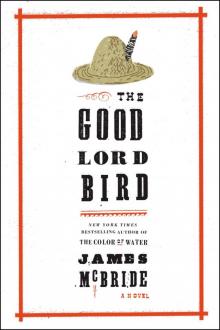 The Good Lord Bird
The Good Lord Bird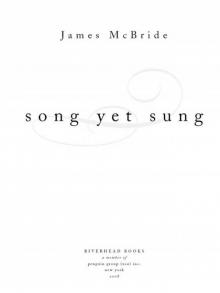 Song Yet Sung
Song Yet Sung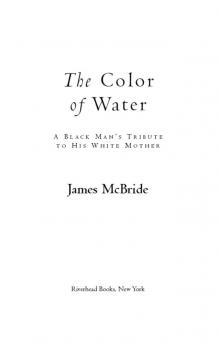 The Color of Water
The Color of Water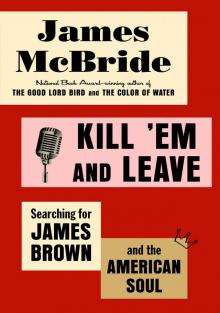 Kill 'Em and Leave
Kill 'Em and Leave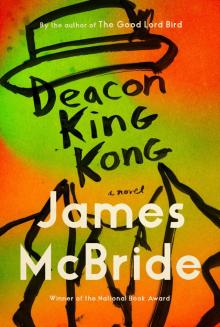 Deacon King Kong
Deacon King Kong Miracle at St. Anna (Movie Tie-in)
Miracle at St. Anna (Movie Tie-in)